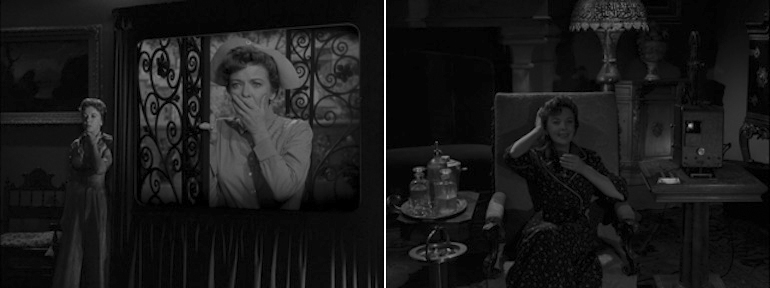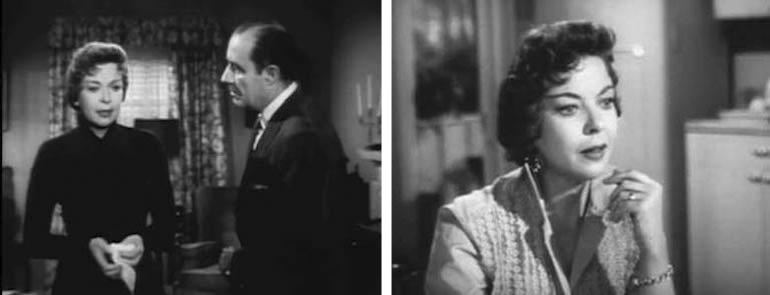THE TROUBLE WITH LUPINO
Amelie Hastie
 FORWARD
FORWARD
 DOWNLOAD
DOWNLOAD
 ABSTRACT / KEYWORDS / ARTICLE / FOOTNOTES / BIBLIOGRAPHY / ABOUT THE AUTHOR
ABSTRACT / KEYWORDS / ARTICLE / FOOTNOTES / BIBLIOGRAPHY / ABOUT THE AUTHOR
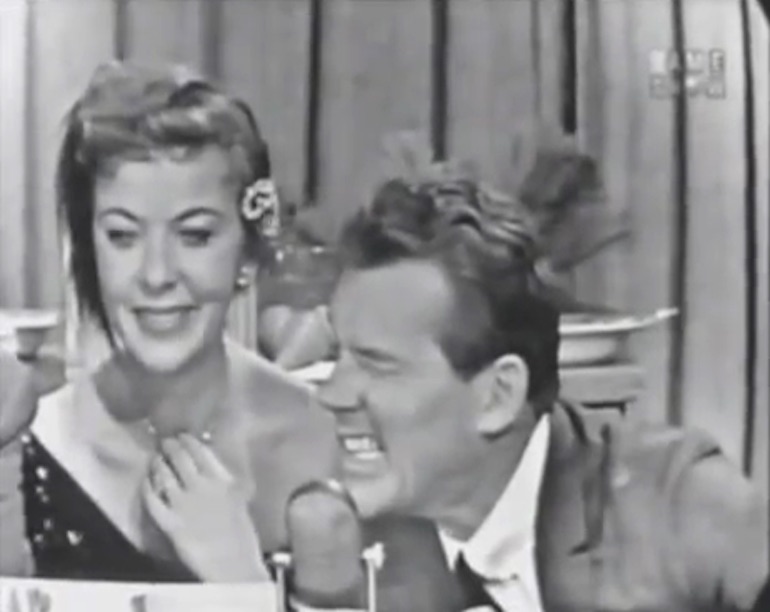
The premise of the 1957-58 US television series Mr. Adams and Eve is narrated in its animated opening credit sequence: ‘This is Mr Adams. And Eve. They play husband and wife who are movie stars. Starring Ida Lupino and Howard Duff. And in real life they really are husband and wife. It’s Mr. Adams and Eve.’ One glorious episode entitled ‘Mr. Adams and Eve and Ida’ begins with a shot on a stage of three figures, their backs to the camera, in director’s chairs: a man in the middle and a woman on either side. The lights darken on the women as the focus comes onto the man. His chair reveals it’s ‘Howard Adams,’ and soon Howard (played by Howard Duff) turns around to announce: ‘I’ve got a little problem. See, there are two women in my life. Over here is Eve Drake.’ Cue to Eve, played of course by Lupino, who turns right to face the audience and announce, ‘Hello, Darlings.’ The camera cuts back to Howard, who continues: ‘And over here is Ida Lupino.’ As the camera shifts, she turns to the left, removes her glasses, and says ‘Hello, Darlings.’
The premise of this particular episode is as follows: Howard and Eve are set to shoot a film, but the director has become ill. As the producers debate a replacement with the stars, Howard recalls seeing ‘a picture on television the other night’ that has all the ingredients for the film they’re working on. He can’t remember the director or the title, even though ‘it’s someone we all know,’ but he describes the plot of Lupino’s 1953 The Hitchhiker. Eve suddenly begins to boil, announcing, ‘The Hitchhiker, that’s what it was called, and it was directed by Ida Lupino,’ before she storms out of the room. In spite of Eve’s jealousy of Lupino –based both on the fact that everyone mistook her for Lupino when she got to Hollywood and that Howard ‘used to go with her’– Lupino takes on the role of director, ultimately winning over Eve along with the producers.
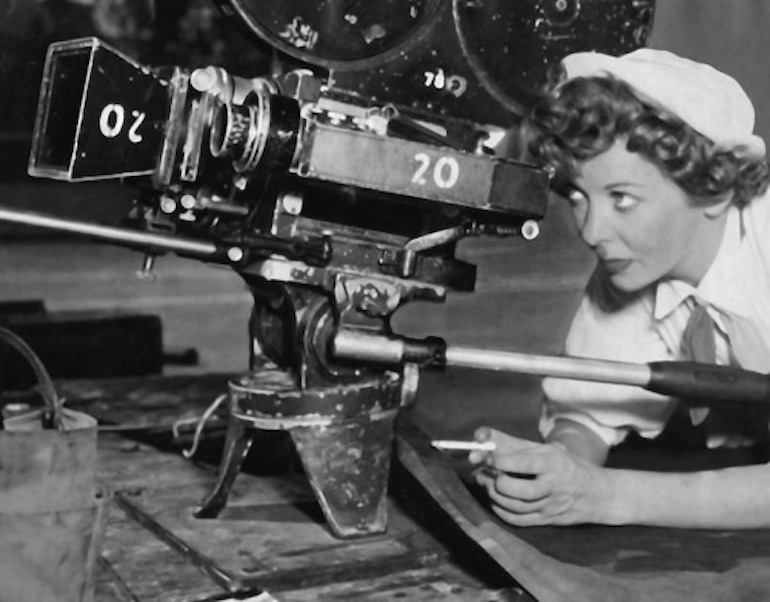
The episode ends back where it began, with the three figures in their director’s chairs on a nearly darkened stage. Howard faces the camera to say: ‘Now my problem is which one do I go home with?’ Both women get up, walk to either side of Howard, and the three stroll out together, arm in arm. As the credits soon announce, the episode was written by a woman, Louella MacFarlane, though not, in fact, directed by one (Lupino directed only one episode of this series). Mr. Adams and Eve was based, too, as the credits say, on characters developed by Collier Young, Lupino’s second husband. And the series was produced by Bridget Productions, Inc., a company named for Duff and Lupino’s daughter.
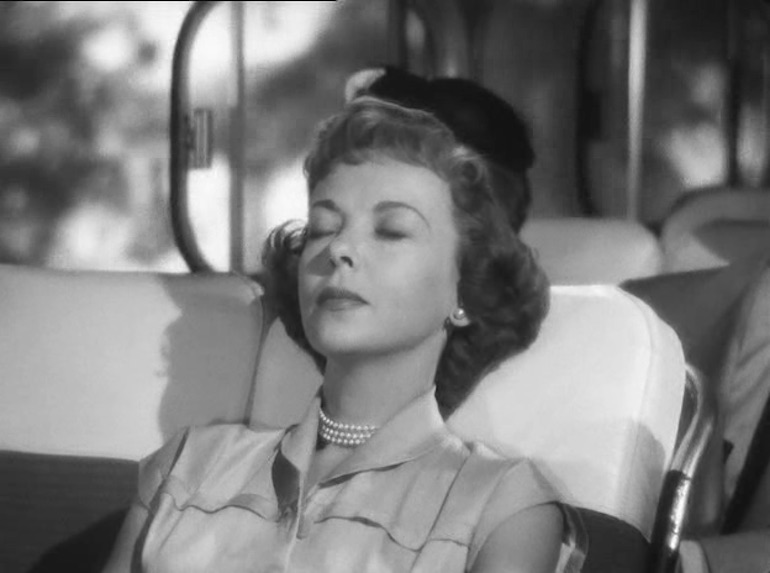
These visual details, along with the facts of the production, are significant in light of the one film that Lupino both directed and starred in: her company The Filmakers’ 1953 production The Bigamist. Alongside Lupino’s turn as Phyllis, wife number two, the film starred Edmund O’Brien in the titular role (as Harry Graham) and Young’s current wife Joan Fontaine as Harry’s first wife, also named Eve; it was written and produced by Young. Both Joan Fontaine’s mother and Collier Young also made minor appearances. Though the episode of Mr. Adams and Eve explicitly refers to The Hitchhiker, its complex familial and marital ties neatly match those of The Bigamist. And so, too, does its final image seem to comment on Lupino’s directed 1953 film. The Bigamist ends with Harry standing in the middle of the courtroom after the judge has declared that the question after his jail sentencing is not which woman he will choose, but rather which woman will choose to take him back. Howard’s embrace of both “Eve” and “Ida Lupino” suggests the opposite.
Of course, this scenario is of another sort entirely, as here we (and Howard) see a different pairing. Not two different women, but two different roles that one woman played: as director and as actress. Moreover, given the context for the series alongside the narrative premise, she plays these two roles in the two media forms of film and television. Howard’s embrace of these two women/roles seems an easy resolution of how and whom to choose; in fact, there’s hardly a choice to be made, as Lupino is both women already. But historically and industrially, such resolutions have been far more difficult.
Have Camera, Will Travel
Lupino directed six films for her independent companies from 1949-1953; after The Filmakers folded, she directed only one more theatrical release, The Trouble with Angels, in 1966. 1 But during this period, she continued to act for both film and television, and she directed over five dozen episodes of various television series from 1956-1968. One might think such work, so rare for a woman during this period (in fact no other historical figure of this period, male or female, can boast the same record), would have secured her place in film and television history. But instead, it seems, Ida Lupino, like her “angels” before her, has apparently caused some trouble. I don’t mean the trouble she was said to have caused as an actress in the 1940s, demanding better roles as a contract player at Warner Brothers and getting herself suspended in the process. I mean the trouble she has caused for history, particularly a broad history of film, both in the industry and in the academy. The fact of the matter, with some exceptions, Lupino has managed a kind of disappearing act from history. Most film historians know who she was, and she certainly appears within historical records. But for one of only two women directing films in Hollywood during the Classical film era2 –1930-1960– she has been sorely neglected in terms of film restoration and current distribution as well as scholarly production.3
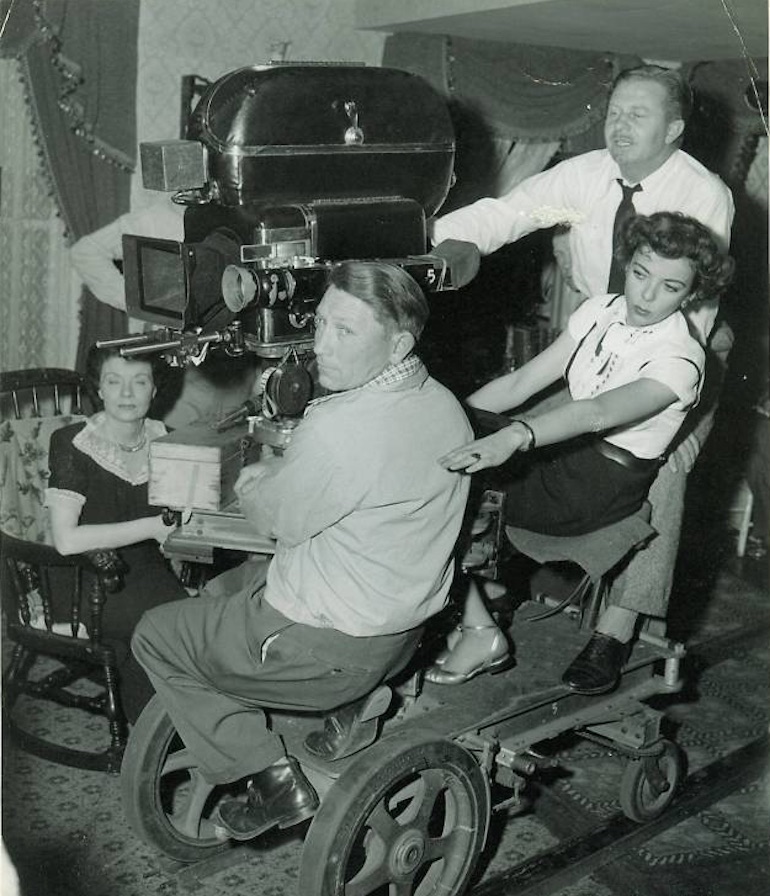
The trouble with Lupino, I want to suggest, is not that she did too little, but that she did too much. Moving across various roles in film and television and, in fact, moving between film and television industries, she became increasingly difficult to categorize. And when it comes to film (or television) and, in effect, to film and television scholarship, particularly scholarship in the US, that’s a problem. I want to take advantage of this special issue to think about her work as an actress and director in television in particular, ultimately considering how the former metaphorically (but also industrially and historically) informs the latter.
British-born Ida Lupino began her career as an actress, following the family tradition on each parent’s side. Lupino became known on screen and on sets as fiercely independent; this characteristic eventually led to her formation of an independent film production company, The Filmakers, with her second husband Collier Young and writer Malvin Wald. Their films were largely realist social dramas, particularly the five films Lupino directed for the company. For instance, their second film, and Lupino’s first official outing as a director, was Young Lovers, also known as Never Fear. Co-written by Lupino and Young, the story is about two young dancers engaged to be married when one of them contracts polio. Young Lovers was followed by Outrage; Hard, Fast and Beautiful; The Hitch-hiker; and, finally, The Bigamist. All of her directed films, in one way or another, addressed social issues, ranging from unplanned pregnancy to rape to familial relations; most explicitly addressed definitions of legality and criminality, calling for a sympathetic legal system.4
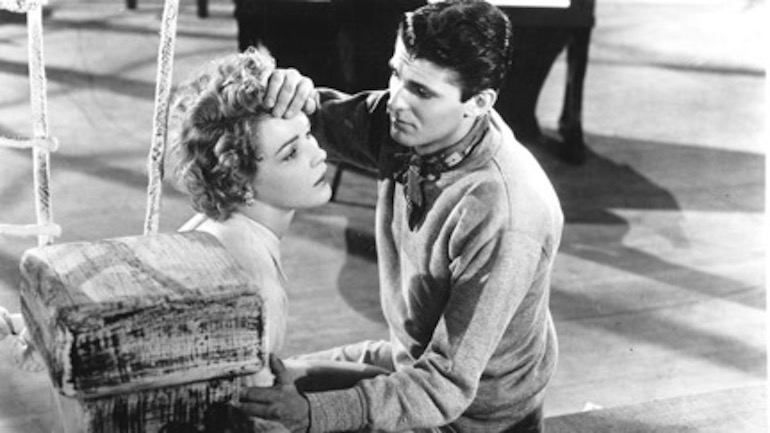
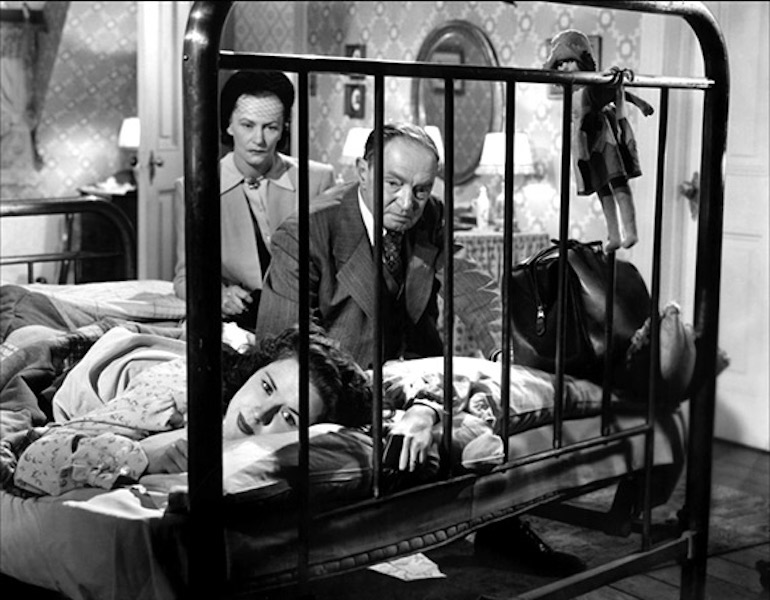
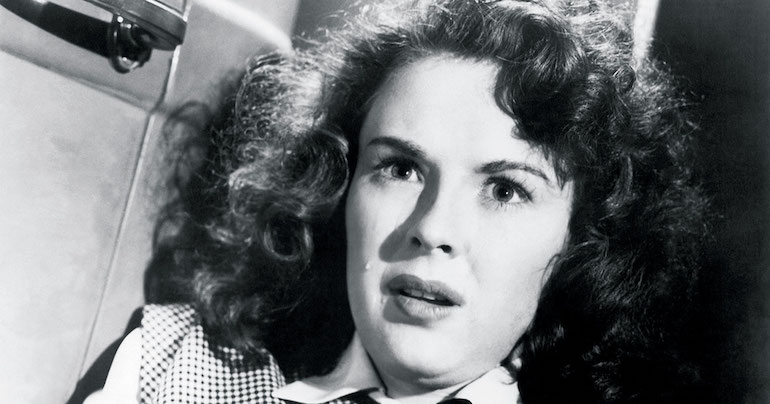
Lupino and Young’s company folded soon after, largely as a result of their attempts to distribute their own films (ironically, a turn to a kind of small-time vertical integration). She appeared as an actress in one of the company’s last films, Private Hell 36, alongside third-husband Howard Duff, but she didn’t direct for the company after The Bigamist, and it was thirteen years before she would direct her last film The Trouble with Angels. However, only three years passed before she began her work as a television director; her first gig was with The Screen Directors Playhouse, a series that invited film directors to come to television. This work, ‘No. 5 Checked Out,’ was also arguably her most “cinematic” television outing –or at least the text that is most consistent, visually and narratively, with her work for The Filmakers.
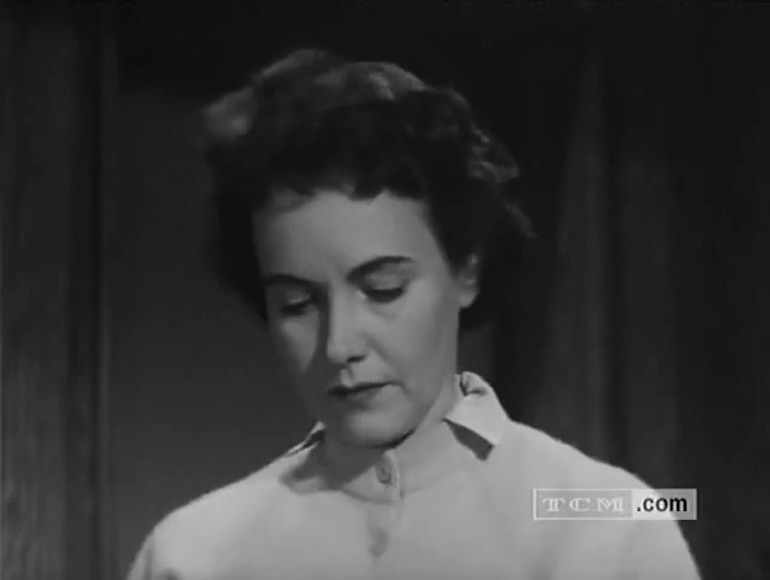
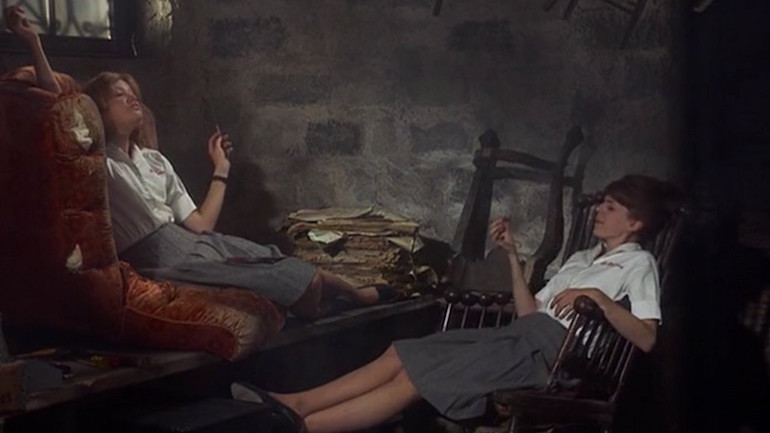
Mirroring her work in film, however, Lupino’s initial primary involvement with television was as an actress. She was one of the primary members of an anthology series (which presented a new story each week, like a theatrical play or a film) called Four Star Playhouse from 1953-1956. And, even more interestingly, as I mention above, she and her husband Howard Duff starred in their own situation comedy created by Lupino’s former husband Collier Young in 1957-58. Following these star turns, Lupino began to direct television regularly; in fact, she was the only woman regularly directing US television at this time (it’s still relatively rare for women to direct American television; in the 2014-15 season, women made up approximately 14% of television directors).5 Based on the success of her film The Hitch-hiker, she was particularly hired to direct adventure series largely starring men, especially westerns and crime series such as 77 Sunset Strip, The Fugitive, The Untouchables, and Have Gun, Will Travel. She also often worked with or around prominent male auteurs in the field, or at the very least men who banked on their names when they came to television, including film director Alfred Hitchcock (Alfred Hitchcock Presents), television wunderkind Rod Serling (The Twilight Zone), and horror film star Boris Karloff (Thriller). Though she directed between 1956 and 1968, the majority of her directorial work for the small screen was between 1960 and 1964, when she worked on over 40 episodes all told. As the 1960s drew on, her work as a director in television became less stable, and her last job was in 1968 (two years after The Trouble with Angels). In a couple of cases, she guest-starred on a series she also directed (such as The Twilight Zone), but only once did she direct an episode in which she also appeared (‘Teenage Idol’ of Mr. Adams and Eve, in 1958), and only occasionally did she co-write those works she also directed or appeared in (‘The Case of Emily Cameron’ for Four Star Playhouse and ‘No 5 Checked Out’).
Importantly, directing television is a very different profession than film directing; in a US context, television series are largely more of a writer’s medium than a director’s one, and those with creative control are writers, creators, executive producers, and headlining stars. Directors are usually less attached to a series than a writer or, of course, a producer; they are hired to put the vision of the series’ creators into place. (In the language of the early Cahiers du Cinema writers concerning filmmakers, they are largely “metteurs en scene.”) Given that she was particularly hired on an irregular basis (the most episodes she directed of any one particular series were nine for Thriller and eight for Have Gun, Will Travel), becoming a television director, for Lupino, meant losing creative control. Moreover, because, with some exceptions, she was only a temporary employee on the set, she wasn’t working in as collaborative an atmosphere as she was with The Filmakers.
And if Lupino isn’t always legible historically, certainly her work as a television director can’t be easily “read.” That is, finding overt and consistent visual patterns across her work is nearly impossible, given the range of series, styles, genres, and the 14-year period in which she worked on a medium in transition. The primary discernible patterns are, rather, industrial and based both on gendered cultural narratives as well as those fictions she was working with. That said, one pattern that emerges across her work –starting with ‘No. 5 Checked Out’ for Screen Director’s Playhouse– is her use of a two-shot staging for conversations between characters. This stylistic approach is a risky one: since both actors are before the camera at the same time, both need to produce a solid performance at once (whereas a shot-reverse-shot format can be edited together between multiple pieces and performances). But it’s a risk that pays off as well: it reveals the duration of time and the space in which both characters exist together, therefore producing a greater sense of reality (a hallmark of Lupino’s work for The Filmakers). And, as television director Robert Butler describes it, the approach shows that Lupino ‘shot not the words but the drama,’ in effect working against a common ethos of television.6
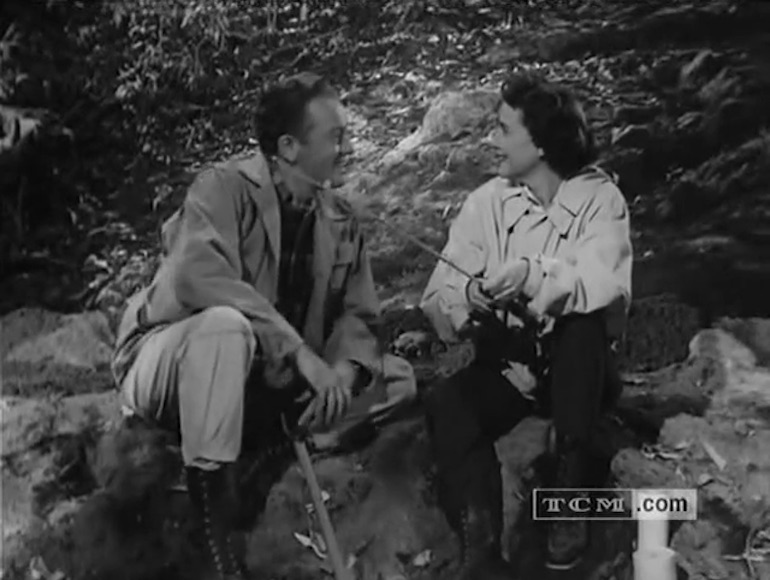
Her work as a television actress, with the exception of Four Star Playhouse and her comedy with Duff, was somewhat similar to her work as a director, in that she was primarily hired for guest appearances on regular series. During the heyday of her directing for television, she made only a fraction of guest appearances, but she continued as an actress in both film and television as her work as a director came to a halt in 1968. However, I want to argue that a commentary about her work as a television director emerges through her occasions as an actress on television. Indeed, as the years went on, several of her television appearances directly or indirectly remark both on her work as a director of the small and big screens and on her position historically. Through these fictions –whether Lupino was directly “type-cast” or not within them– another kind of pattern emerges, one that narrates the end of this actress-director’s career.
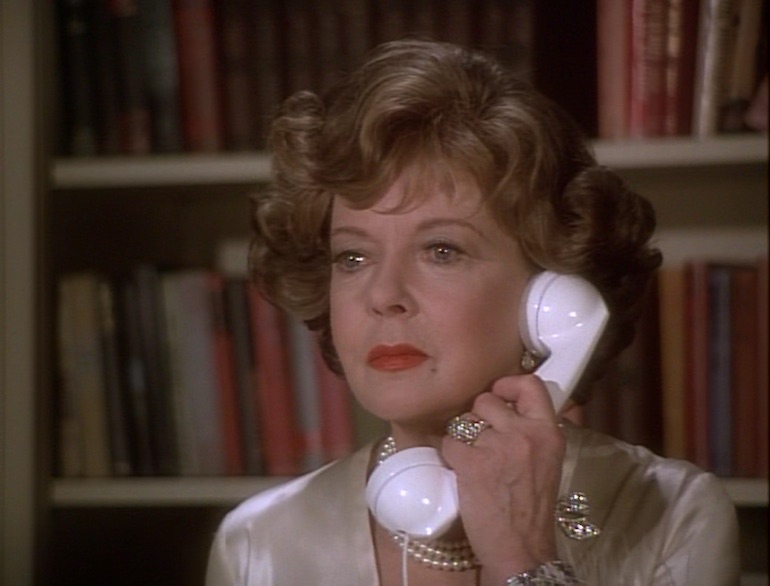
‘Holy Disappearing Act!’
Hence, one of her final appearances, in the second full episode of the 1975 Ellery Queen, the opening announcement seems an eerie commentary over a shot of guest star Lupino: ‘In a few minutes this woman will be dead.’ She appears for just five minutes of the nearly fifty-minute episode before mysteriously falling to her death from her balcony after experiencing elements of an ‘Ellery Queen’ novel coming to life as she reads it, such as sounds of a dog barking and of a car arriving outside.7 But in fact this “story” began fifteen years prior to her appearance on Ellery Queen, in what might be her most well-known television gig. In 1960, at the age of 42, she appeared in an episode of the series The Twilight Zone entitled ‘The 16mm Shrine.’ Here Lupino played a washed-out movie star named Barbara Jean Trenton who could no longer get any film roles because she was past her prime. As Mary Desjardins writes, Barbara Jean ‘can’t get enough of herself’ (2015:80). The episode, not entirely unlike that of Ellery Queen, opens as such: ‘Picture of a woman looking at a picture. Movie great of another time. Once brilliant star in a firmament no longer a part of the sky, eclipsed by the movement of earth and time. Barbara Jean Trenton, whose world is a projection room, whose dreams are made of celluloid….’
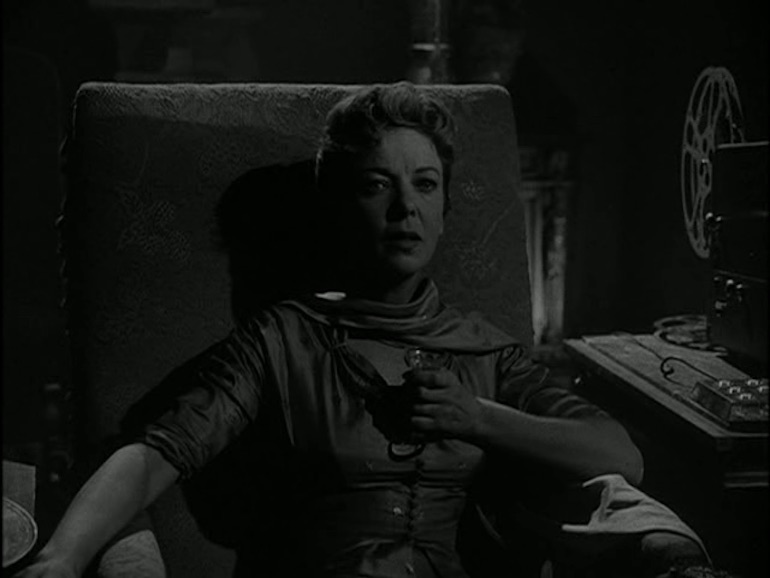
Of course, as Desjardins and Christine Becker also note, this story is not so very different from the film Sunset Boulevard. Nor is it so different, in a sense, from Bette Davis’s film All About Eve, which, like Sunset, wrestles with the experience of the aging actress.8 As the episode goes on, Trenton’s agent attempts to rouse her out of her nostalgia for the olden days. He gets her a potential role for her old film studio, where she had previously been known (not unlike Lupino herself) as one of the most difficult actresses the studio head worked with. But the part is for a mother and, as Trenton says, she ‘doesn’t play mothers.’ She storms out of the office and retreats to her screening room, ultimately and literally disappearing into the world of celluloid. The cinematic and television screens now converge: Trenton’s film into which she enters is forever projected in her home theater, which viewers watch on their television sets.
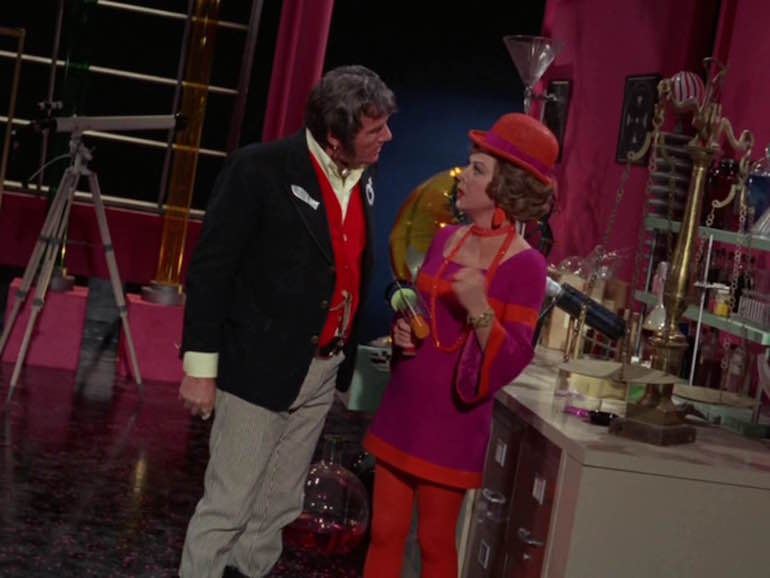
Eight years after her Twilight Zone appearance, Lupino plays the guest villain on the mod television series Batman as the ‘Entrancing Dr. Cassandra,’ an expert in the occult who has designed a pill to make her (and her sidekick husband Cabala, played by her sidekick husband in real life Howard Duff) invisible. Entering their alchemy lab after a successful heist, Cabala asks, ‘How do these pills work, Doc-y baby? Are we really invisible?’ Answers Cassandra, donned in hot reds and pink to match the pink walls of her lab, ‘No, but we may as well be. You see, after taking the pill, we blend into the background so perfectly no one can see us.’ And the alchemist goes on to announce that her goal is to make ‘other cats do what I crave them to do,’ intending ‘to succeed where my foremothers failed.’ She plans to free all the arch criminals in Gotham City so that ‘we become an invisible empire, with yours truly as queen.’ Within this scene –and the episode overall– is a sense of the prescience of the star-director’s eventual disappearance from the screen, but in this case the onus is on the woman herself rather than the industry: she pops her own pill. Such a position isn’t entirely far from the truth, given Lupino’s commitment to directing television in the early-mid 1960s in particular. In fact, this episode played the same year Lupino directed for the last time.9
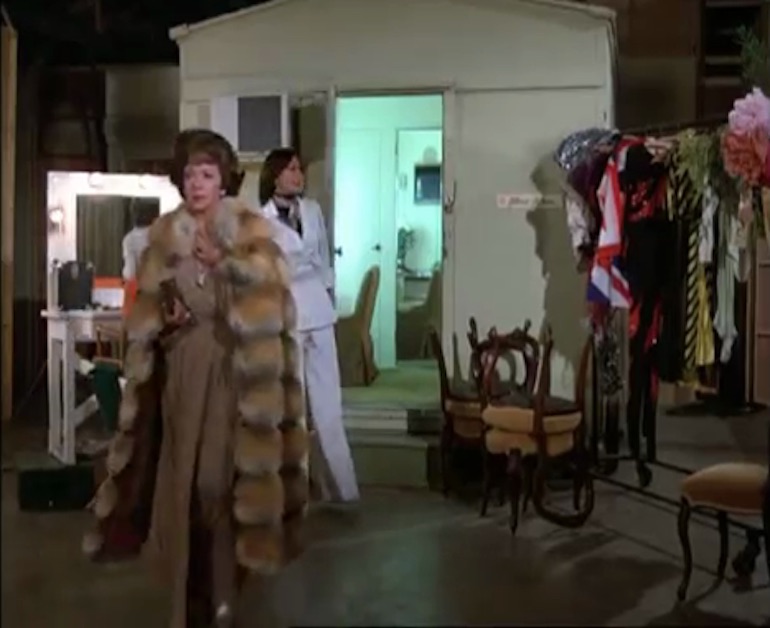
Nearly ten years later still, Lupino’s final role on television comes on the infamous crime series Charlie’s Angels, in which three beautiful women have left their lowly jobs in the Los Angeles police department to become private detectives, working for a man we never see named Charlie. In this episode entitled ‘I Will Be Remembered,’ Lupino plays another washed out movie-star, Gloria Gibson (the name patently recalling Gloria Swanson of Sunset Boulevard), also on the edge of a nervous breakdown. She hires Charlie and his team of “angels” because she believes someone is trying to drive her insane, using scenes from her past films to frighten her. When the angels learn about her case, Kelly says, ‘Gloria Gibson. I saw one of her pictures on TV last week.’ Together they recall the actress-character of the film as a great survivor –or, in their ‘70s lingo, as a ‘very heavy lady.’ But they also recall elements of the film as part of the visions that Gibson has seen, wondering over whether she’s ‘flashing back on her old films’ or whether ‘someone’s doing a ‘Gaslight’ number on her.’ Entangled in the story of this fictional character is a history and language of classical Hollywood film, demonstrated, too, by Lupino’s very appearance. When the four of them soon meet, the angels allude to their concerns about whether what she saw was real, prompting Gibson to say, ‘I know what you’re thinking… They were in scenes from my movies. But I did see them. I am not unbalanced… Somebody’s trying to drive me crazy. Or kill me.’ Asks Jill: ‘Why would anyone want to do that?’ Gibson responds, ‘You don’t know Hollywood…’ In this episode, however ironically Lupino’s last on television, the character she plays is fighting her own disappearance, knowingly reading for the role of the mother in an updated version of one of her own films; at the meeting with the studio head and director, she offers a monologue about the difference between film and theater which seems to hail as much from a director as an actress. Soon after she’s admiring her name attached to her own trailer on the set.
Across these individual episodes of four very different series emerges a commentary that extends from Twilight Zone yet also repeats that evident in ‘Mr. Adams and Eve and Ida.’ Here is an anxiety about the aging actress writ large, but so too is there an anxiety about a woman’s control over her own image. In fact, Christine Becker notes a similar trope in Four Star Playhouse’s ‘The Case of Emily Cameron’ (1956), in which Lupino appears ‘as both the controller and controlled.’ Writes Becker, the fact that this woman is punished for being domineering ‘mirrored Lupino’s own attempts in the press to shape her image as [a] female director’ (BECKER, 1971:176). Part of that ‘punishment,’ perhaps, is that the film star has shifted into the home, whether in the narratives of the various series or on the very screens on which viewers see her. And in each, Lupino acts out a series of paradoxes: disappearance and re-appearance, controlled and controller, star and director.
Of course Lupino had other roles during this time, some of which were on well respected television series, others on campy sitcoms, and still others on low-budget and fairly crummy films. And of course other actresses of the time played the role of the aging Hollywood star, on the road to disappearance (or perhaps already there).10 Certainly, then, Lupino’s roles across all of these television series certainly tell a common story of aging actresses overall, but what I find fascinating about them is how they narrate Lupino’s own increasing disappearance on screen as an actress, off screen as a director, and, ultimately, as a serious subject of film history. Unfortunately, in part her work in television was responsible for this demise; as a director she lost the creative control she had in the past, and as an actress increasingly she could only seek bit parts. In this way, her work between acting and directing and between film and television functions as both a model and a cautionary tale for many actress-directors working today, particularly in a US context. Television does indeed offer the space to direct, with relatively more opportunity for women than does film, but this opportunity comes with a price: the loss of a sense of autonomy and even, often, collaboration. And certainly directing television, with some exceptions, also means the loss of signatory authorship.
Epilogue: The Television Shrine
When Eve is fretting on set about the mutual attention between Howard and Ida, her producer says, ‘She’s just a director, he’s an actor, they’re doing a scene. … Darling, you have him at home.’ In the scene at their home that follows, however, Howard watches a film on television starring Ida Lupino. Eve attempts to get his attention by wandering into the room in a fabulous outfit. But he pays her little mind, announcing, ‘It’s one of Ida’s old pictures,’ and she storms out the door. In other words, Eve also doesn’t have him at home, because at home he is paying more attention to Ida on the home screen who is herself more than ‘just a director.’
In their fight both to work and to be remembered, the self-reflexive characters Barbara Jean Trenton, Gloria Gibson, and Eve Drake seek life and rebirth on the silver screen. But historically speaking, director-actress Lupino largely found her shrine and possible salvation on the small set. Recognizing her work in part as a cautionary tale, we might begin to imagine how women director-stars today can succeed in this path that their foremother paved. At least, setting side by side these screens, industries, and roles Lupino played as director and actress, we can breathe life into her diverse history and our study of it.
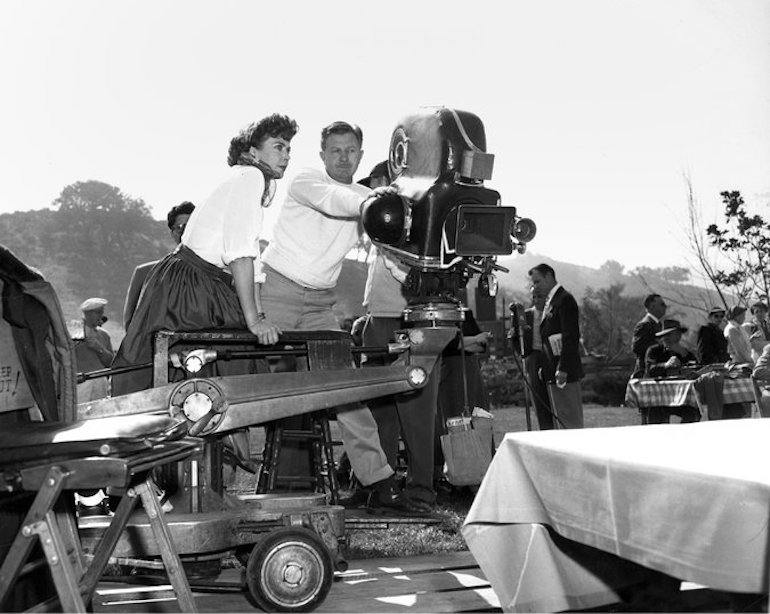
The author wishes to thank HeyYoung Cho and all of the organizers of the 2015 Seoul International Women’s Film Festival for their invitation to serve as a keynote lecturer for their retrospective of Lupino’s films, from which part of this essay is drawn. Many thanks also to Mark Quigley of the UCLA Film and Television Archives and to Martin Gostanian of the Paley Center for Media for their invaluable help in tracking down materials. Thanks, too, to long-time television director Robert Butler for taking the time to discuss his field of work as I completed this essay.
NOTES
1 / Her directorial debut, originally uncredited, was Not Wanted, which she took over from Elmer Clifton when he fell ill. This film was for the original independent production company, Emerald, which she and Young joined with Anson Bond. As I go on to note, she and Young then started the company The Filmakers with Malvin Wald.
2 / Dorothy Arzner was the other woman director in Hollywood during the Classical era.
3 / Her directed films have not been restored, and not all of her directed work are even available today on DVD. Moreover, my BFI book on The Bigamist (London: British Film Institute, 2009) was only the second academic book published on her work after Annette Kuhn’s edited collection Queen of the B’s: Ida Lupino Behind the Camera (NY: Prager, 1995); none have been published since, and neither have any major scholarly essays in English language film studies. Two recent books, however, have included extended analyses of Lupino’s television appearances: Mary Desjardins’ Recycled Stars: Female Film Stardom in the Age of Television and Video (Durham, NC: Duke University Press 2015) and Christine Becker’s It’s the Pictures That Got Small: Hollywood Film Stars on 1950s Television (Middletown, CT: Wesleyan University Press, 2009).
4 / Please see my book The Bigamist for further discussion of her work as film director and star during this period.
5 / See Martha Lauzen, ‘Boxed In: Portrayals of Female Characters and Employment of Behind-the-Scenes Women in 2014-15 in Prime-Time Television’. Boxed In, http://womenintvfilm.sdsu.edu/files/2014-15_Boxed_In_Report.pdf
6 / Conversation with the author, June 21, 2016.
7 / This series was known for its self-reflexivity. In each episode, the character Ellery Queen, a mystery writer who helps his police detective father solve mysteries, would turn to the camera to ask the audience if they had solved the case themselves.
8 / Of course in the case of All About Eve, Davis also plays a mere 40-year old.
9 /Tellingly, given her increasingly “spectral” status in the industry, her last directed work was an episode of the series The Ghost and Mrs. Muir, itself a sitcom based on a 1947 Hollywood film.
10 / See Mary Desjardins, ‘Norma Desmond, Your Spell Is Everywhere: The Time and Place of the Female Film Star in 1950s Television and Film,’ Recycled Stars 57-98.
ABSTRACT
The only actress to direct herself in a film during the Classical Hollywood era, Ida Lupino was also a television actress and director. The trouble with Lupino, this essay argues, is not that Lupino did too little historically, but that she did too much. Moving across various roles in film and television and, in fact, moving between film and television industries, she became increasingly difficult to categorize. And if Lupino isn’t always legible historically, certainly her work as a television director can’t be easily “read.” Though she directed television between 1956 and 1968, the majority of her directorial work for the small screen was between 1960 and 1964, when she worked on over 40 episodes all told. Thus, finding overt and consistent visual patterns across her work is nearly impossible, given the range of series, styles, genres, and the 14-year period in which she worked in a medium in which not the director but the writer and producer are the primary creative forces. However, one discernible pattern emerges through her work as a television actress: several of her television appearances directly or indirectly remark both on her work as a director of the small and big screens and on her position historically. Through these fictions –whether Lupino was directly “type-cast” or not within them– the pattern that surfaces functions to narrate the end of this actress-director’s career. Taking into account her varied, seemingly “illegible” work, scholars must design other models for the historical and textual analysis of this significant American figure.
KEYWORDS
Ida Lupino, television direction, actress-director, Mr. Adams and Eve, The Bigamist.
BIBLIOGRAPHY
BECKER, Christine (2009). It’s the Pictures That Got Small: Hollywood Film Stars on 1950s Television. Middletown, CT: Wesleyan University Press.
DESJARDINS, Mary (2015). Recycled Stars: Female Film Stardom in the Age of Television and Video. Durham, NC: Duke University Press.
HASTIE, Amelie (2009). The Bigamist. London: British Film Institute.
KUHN, Annette (1995). Queen of the B’s: Ida Lupino Behind the Camera. NY: Prager.
AMELIE HASTIE
The author of Cupboards of Curiosity: Women, Recollection, and Film History (Duke UP) and Ida Lupino’s The Bigamist (a BFI “Film Classic”), Amelie Hastie is founding Chair of the Film and Media Studies Program and Professor of English at Amherst College. Her research and teaching focus on film and television theory and historiography, feminism, and material cultures. She has edited special issues of Film History, journal of visual culture, and Vectors, and she currently writes “The Vulnerable Spectator” column in Film Quarterly. She was a proud member of the Camera Obscura editorial collective for ten years. She is completing a book on the 1970s television series Columbo for Duke University Press.
Nº 8 PORTRAIT AS AN ACTRESS, SELF-PORTRAIT AS A FILMMAKER
Editorial. Portrait as an actress, self-portrait as a filmmaker
Gonzalo de Lucas
DOCUMENTS
About the femenine
Maya Deren
About Fuses
Carolee Schneemann
Conversation about Wanda by Barbara Loden
Marguerite Duras and Elia Kazan
About the Film-Diary
Anne-Charlotte Robertson
Nothing to say
Chantal Akerman
FILMS UNDER DISCUSSION. INTERVIEWS
About the Women Film Pioneers Project
Alejandra Rosenberg
Medeas. Interview with María Ruido
Palma Lombardo
VIDEO ESSAY
Florencia Aliberti, Caterina Cuadros and Gala Hernández
ARTICLES
Lois Weber: the female thinking in movementWeber: the female thinking in movement
Núria Bou
‘One must at least begin with the body feeling’: Dance as filmmaking in Maya Deren’s choreocinema
Elinor Cleghorn
Nothing of the Sort: Barbara Loden’s Wanda (1970)
Cristina Álvarez López and Adrian Martin
The Trouble with Lupino
Amelie Hastie
Presence (appearance and disappearance) of two Belgian filmmakers
Imma Merino
Identity self-portraits of a filmic gaze. From absence to (multi)presence: Duras,Akerman, Varda
Lourdes Monterrubio Ibáñez
REVIEW
Jorge Oter; Santos Zunzunegui (Eds.) José Julián Bakedano: Sin pausa / Jose Julian Bakedano: Etenik gabe
María Soliña Barreiro


